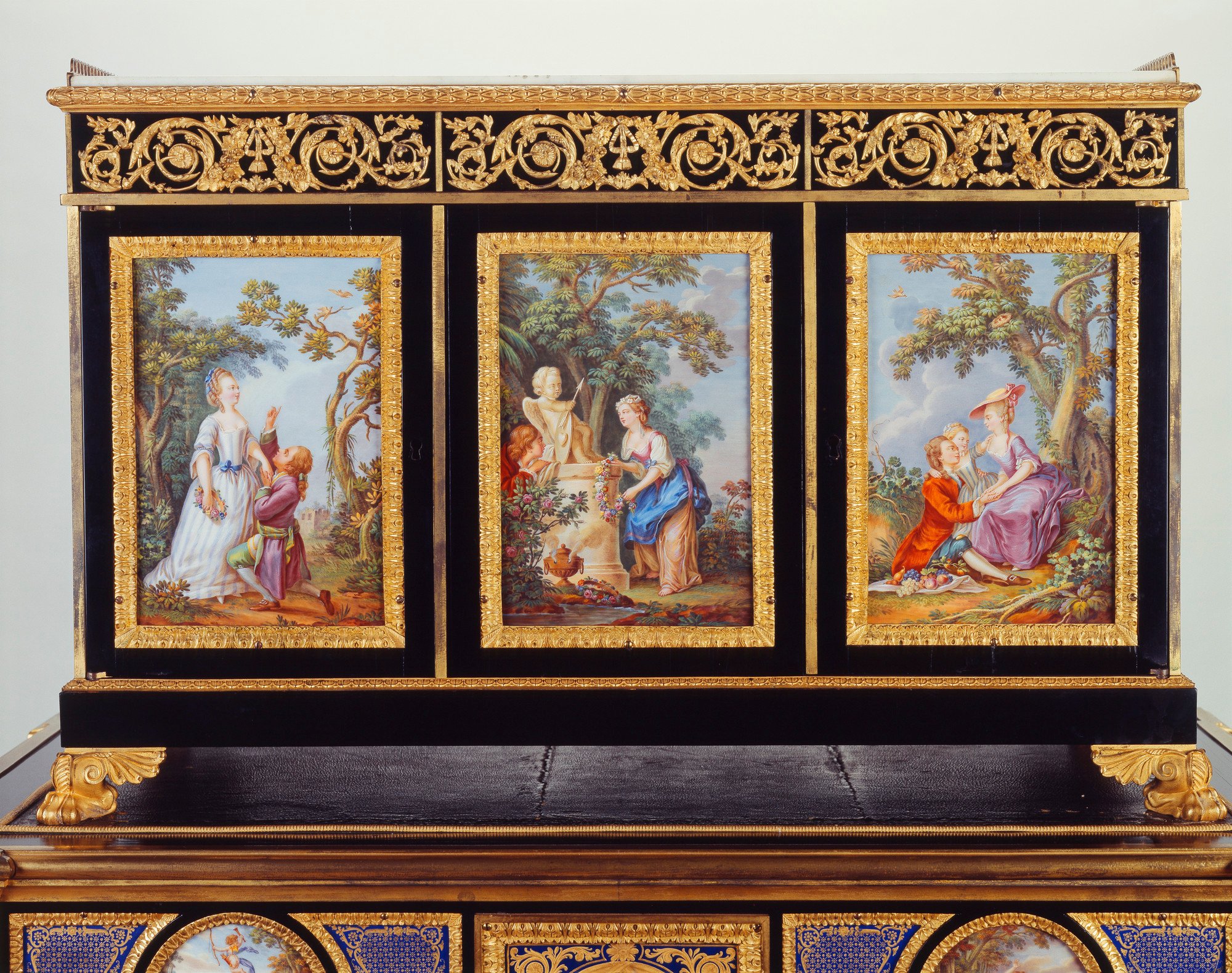
George IV and French Furniture
French furniture collected by a true Francophile
Commode
1785-90RCIN 2593
This commode was made in in the late eighteenth century by the leading ébéniste, Adam Weisweiler. The designer intended to incorporate seventeenth century Florentine hardstone decorative panels into a neoclassical form characteristic of late-eighteenth century French furniture design. He was employed by the marchand-mercier, Dominique Daguerre, who moved to London in the late 1780s and 1790s and was responsible for the furnishing of Carlton House on behalf of the Prince of Wales (later George IV).
The three inset front panels are of pietra dura. The technique of insetting specimen stones, to create two or three dimensional images, was perfected in the late sixteenth century in Florence under the patronage of the Medici dukes. The earlier panels are those to the sides depicting a tulip to the left and a crown imperial to the right. In the seventeenth century the tulip was related to the exotic while the crown imperial is a flower associated with power and majesty.







